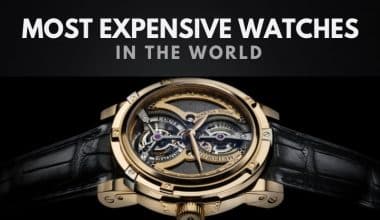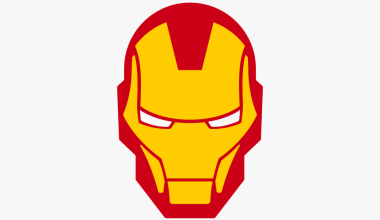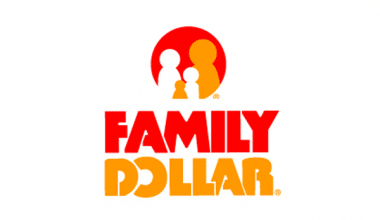The Jaguar logo is widely recognized in the automotive industry today, and it is frequently associated with one of the strongest luxury brands of all time. But how well do we know the history of this powerful brand’s logo? We’ll go over this in this article. In addition to the history and general overview of the Jaguar logo, we’ll take a look at some of the brand’s products, like the Jaguar XJ, and the F-Type S Coupe. We’ll also touch a little on the Jacksonville Jaguars logo.
General Overview Of The Jaguar Logo
The Jaguar car logo is one of the world’s most well-known vehicle symbols. Jaguar, which is currently owned by Tata Motors, has established itself as a powerful manufacturer of elegant, athletic automobiles over the years.
The Jaguar logo is now known as the “Leaper,” and it depicts a sleek, jumping Jaguar.
The Jaguar “Leaper” is a gorgeous yet simple image that may be seen on the hood of any vehicle. The insignia is sleek and classy, appearing on an automobile in silver or chrome but also in black and white in marketing materials.
The Jaguar vehicle logo features a jaguar cat in mid-pounce, its body stretched and teeth bared. Jaguar’s wordmark is sometimes written in block capital letters in a sans-serif font under the picture.
Overview of the Jaguar Brand
Jaguar is a luxury vehicle brand and a multinational British automobile manufacturer. In fact, the company began in 1922 as the Swallow Sidecar Company, producing motorcycle sidecars.
After a while, Jaguar began constructing passenger car bodies under the S.S. Cars Limited brand.
Jaguar has had a number of different owners over the years, including British Motor Holding. Jaguar is currently owned by the Land Rover Corporation. Land Rover and Jaguar stated in February 2021 that all Jaguar vehicles would be entirely electric by 2025.
History and Evolution Of The Jaguar Logo
The jaguar symbol did not begin as the jumping jaguar that we know today. We can observe how the graphic evolved over time if we trace the old Jaguar emblem back as long as we can. Here’s a short look at some of the most iconic Jaguar car emblems over the years.
1922
Swallow Sidecar was responsible for the development of sidecar products for motorcycles in the United Kingdom in 1992. This is the company that would eventually become Jaguar.
The company’s emblem showed its name inside a blue circle with a red outline. The circle was additionally adorned with two yellow-gold wings.
1930
When Jaguar first started as a car firm in the 1930s, the early logo appeared to be inspired by the Swallow Sidecar Company. The logo featured a hexagon with eagle wings and a tail in the center, as well as a wordmark.
1945
The first iteration of the new Jaguar emblem that most people are familiar with was unveiled in 1945. This year’s jumping Jaguar is extremely similar to the one we know presently. The animal’s contour was black, and beneath it was the Jaguar wordmark in all capital letters.
The wordmark was a strong shade of dark green, a color commonly associated with wealth, which was a notable distinction between the Jaguar emblem now and the one we had back in the 1940s.
The leaping jaguar emblem was slightly modified over the years as designers experimented with more streamlined forms with smoother curves and fewer corners. The wordmark was additionally blackened and given a slightly thinner typeface.
Most of the colors in the Jaguar emblem were changed for a brief period of time, and the team explored utilizing a figure of a Jaguar’s head in a red circle.
2001
The Jaguar logo was redesigned in 2001, simplifying the mark’s visual identity to plain black-on-white. The badge’s numerous features were improved and modernized, and the jumping cat was given a more professional, cleaner appearance.
The typeface used in this logo is a modern but contemporary sans-serif.
2012
The current Jaguar logo is a three-dimensional image of a Jaguar animal leaping in silver grey. The wordmark beneath the animal is bolder and more confident than the original type.
Overall, the entire silver badge appears sleek and fluid.
Meaning Of The Jaguar Logo
The Jaguar Automobile Emblem
Animals are frequently used in the production of logos for vehicle manufacturers. Most of the time, these creatures are picked for their speed, such as the Mustang horse, or for their association with concepts of freedom, such as bird wings.
The Jaguar symbol is associated with power, speed, and grace. The animal represents performance, ambition, and strength, according to the company. The leaping jaguar has a scowl on its face to illustrate the creature’s vitality.
The idea to have the animal leap forward appears to be to remind the audience of the Jaguar vehicle’s fast speed and performance, which performs with the precision of a jaguar.
Colors of the Jaguar logo
The primary Jaguar logo color nowadays is a silver/grey gradient. The three-dimensional silver is meant to look exactly like the logo on a Jaguar car on marketing materials. The Jaguar sign is frequently accompanied by a silver wordmark.
There are times when the Jaguar emblem is printed in black and white, but the silver and metallic image is the most popular.
What Font is Used in the Jaguar Logo?
The Jaguar logo’s typography is unique to the brand, however, many experts believe it is a modified version of the “Optima” typeface. Hermann Zapf created the Optima typeface in 1958.
Although the firm has previously experimented with serif typefaces, the current Jaguar font is a sans-serif type written solely in capital letters. A large amount of space between the letters contributes to the font’s legibility.
The Jaguar XJ: An Overview
The Jaguar XJ carries a lot of weight as the lone British model in a sector dominated by Germans, but it does it admirably. A new generation of Jaguar XJ is in the works, and Jaguar has revealed that it will be an all-electric luxury sedan that will launch before the end of 2019.
Engines, Suspension, and Handling
A 3.0-liter supercharged V-6 with 340 horsepower is standard, with a 470-hp supercharged V-8 available as an option. An all-wheel-drive vehicle with the V-6 raced to 60 mph in 5.1 seconds on our test track; we haven’t tested the supercharged V-8 since 2011, but it managed a 4.4-second zero-to-60-mph time back then. The steering is quick—perhaps too sharp for consumers of large luxury sedans—giving the XJ a decidedly aggressive driving demeanor. It feels more like a sports sedan than a luxury limousine, thanks to its strong suspension and surprising agility.
Interior Design and Technology
The interior is appropriately opulent for the XJ’s position at the pinnacle of the Jaguar series, with high-quality materials and opulent style. Standard and long-wheelbase variants are available, with the latter providing a much larger back seat. Even though we have some concerns about the build quality and the buggy infotainment system, the XJ is a pleasant ride. A panoramic sunroof, heated and cooled front and rear seats, a 20-speaker Meridian audio system (a 26-speaker system is available), and a touchscreen interface with navigation are standard on all XJs. A slew of driver-support systems, including automated emergency braking and lane-keeping aid, are standard, although adaptive cruise control and self-parking are optional.
Review of the New Jaguar F-Type S Coupe
The Jaguar E-Type was supposedly regarded as the most beautiful car in the world by Enzo Ferrari, which is high praise coming from the master of Maranello and the father of some of the world’s most iconic motor cars
The British manufacturer has long considered resurrecting the E-Type with a new two-seater sports car. But, even while it was owned by one of the world’s largest automakers, Ford, it never managed to turn any number of concept cars into production realities.
That is, until the F-Type debuted in Australia last year in roadster form, and is now joined by a hard-top coupe that more closely mimics the original nature of the E-Type.
What Does The Jaguar F-Type S Offer?
The Coupe, like the roadster, is initially available in three model classes that are nearly identical in terms of features and technical underpinnings.
However, unlike its main rival, Porsche, which charges more for its Cayman above the soft-top Boxster, the F-Type Coupe undercuts the roadster, with the base model costing about $20,000 less, including on-road fees.
The mid-spec V6 S we’re trying today costs $151,830 plus on-road costs, while the flagship V8-powered F-Type R closes out the lineup and approaches the price of the Porsche 911 at $219,130 plus on-road costs.
All three models are rear-wheel drive, with an eight-speed automatic transmission, four airbags, rear parking sensors, bi-Xenon headlamps, LED tail lights, cruise control, keyless entry and push button start, climate control, air conditioning, and an eight-inch color touchscreen with Bluetooth audio and phone streaming, as well as sat nav.
Aside from extra power from its supercharged 3.0-liter V6, the S adds adaptive suspension, a mechanical limited-slip differential, an active sports exhaust, red brake calipers, leather seat upholstery, and orange shift paddles on the steering wheel to the standard model.
However, like with most Jaguar models, there is a vast and pricey list of options to pick from. And our test vehicle had over $26,000 in options, including 20-inch alloy wheels, performance seats in premium leather, and a panoramic sunroof. Even the switch to enable the sports exhaust is an additional $260, which should be standard.
A Look At The Interiors
The F-Type is not only a visually stunning automobile, but getting into its two-seater cockpit is an experience few cars can match.
It all begins when you click the key fob to open the car and its flush-fitting door handles pop out of the doors, and it continues when you settle into the snug-fitting seats in the driver-focused cockpit.
The starter button then pulses in anticipation of starting the engine, after which the tacho needle spins through the rev range and the air conditioning vents rise from the center of the dash.
The driving posture is low, the dished three-spoke steering wheel is comfortable in the hand, and the rifle-shot gear lever is surrounded by an anodized exhaust switch and a volume knob for the audio system. A grab bar on the passenger side adds to the driver-focused aspect.
The interior is wrapped in a high-quality blend of dark materials, including lashings of leather, as well as imitation carbon fiber, aluminum, and orange anodized pieces with matching stitching. It looks much better at night, with its ambient lighting bathing the cottage in a rainbow of colors.
There isn’t much storage room in the cabin, as with any two-seater sports car, with a covered pair of cupholders and a shallow bin in the center console, as well as small door pockets. However, the Coupe’s hardtop roof and hatchback opening increase boot room over the roadster from an almost worthless 196 to 315 despite the fact that both only come with a space-saving spare tire.
What About Under The Bonnet?
While the V8 engine in the hardtop F-Type delivers greater power than its roofless sibling, both V6 engines produce the same power as the coupe models.
The S, like the roadster, develops 280 kW from its supercharged 3.0-liter V6, providing enough power to go from 0 to 100 km/h in 4.9 seconds.
However, despite the fact that the supercharger provides more immediate response than turbos, which require pressure build-up through the exhaust system, the F-Type can’t match the low-rev pulling power of modern turbo motors, with its maximum torque output of 460 Nm achieved at a relatively high rev range of 3500 rpm.
Nevertheless, it revs smoothly and rapidly, with a deliciously rich exhaust tone generated from the twin tailpipes that burble when you let go of the pedal.
Within the dynamic settings, there are three modes that change the engine’s characteristics. The winter mode provides a gentle progression of power to prevent wheelspin in slippery conditions. The sport mode changes the dash from blue to a racing red. It also sharpens the throttle response to the point where it feels strung out on a leash.
In terms of fuel economy, Jaguar claims the V6 S Coupe has an average fuel economy of 8.8 liters per 100 kilometers, which is difficult to match when the engine is so tempting to rev and hear its snarl. During our time in the car, we averaged just over 10 liters per 100 kilometers on a mix of city and freeway driving.
On The Highway
The Jaguar F-Type S Coupe is constructed primarily of lightweight aluminum. However, it is not a total featherweight, with a curb weight of 1577 kg.
The coupe, on the other hand, is lighter (by 20 kg) and stiffer than the convertible, which enhances its already excellent road holding.
When pushed around the corners, where the F-Type sits very flat with a generous degree of grip from both ends of the car, the electric power steering is light but precise, with an immediate response to inputs and a fair level of feedback. The mechanical differential also delivers excellent grip under high acceleration and a more predictable progression when the rear axle separates.
When in its most comfortable position, the adaptive suspension smooths out some of the tiny bumps, but the F-overall Type’s demeanor is plainly skewed towards cornering rather than pure comfort.
Verdict
The F-Type Coupe is one of the most dramatic new sports cars in a generation, seamlessly carrying the head-turning Type’s ability into the modern era.
In isolation, it demonstrates Jaguar’s rapid progression under Tata ownership, as it is not only beautiful to look at but also thoroughly engaging to drive in V6 S form.
However, it is not without flaws, especially when compared to its direct competitor, the Cayman, which is cheaper, faster, lighter, more efficient, and more practical.
Is It Worth Buying A Jaguar Now?
There is no doubt that buying a used Jaguar is a wise and exciting decision today. With Jaguars, you can purchase a luxury-performance car for an affordable price, with very little risk.
How Much Is The Cheapest Jaguar?
The cheapest Jaguar is priced at $2,900.
Do Jaguars Cost A Lot To Maintain?
Compared to other luxury vehicles, Jaguars are relatively expensive to maintain.
Logo of the Jacksonville Jaguars
The symbol is a beautiful representation of the team’s major attributes. The Jacksonville Jaguars logo symbolizes the talisman’s unpredictability, invincibility in beating the opponent, and unselfish desire for protection.
Overview of the Jacksonville Jaguars Brand
The Jacksonville Jaguars are an American football team headquartered in Jacksonville, Florida. The Jaguars are a member of the American Football Conference (AFC) South division of the National Football League (NFL).
This club was founded in 1995 as an expansion squad in the National Football League. However, an unverified report mentions 1989. That year, the “Touchdown Jacksonville!” prospective ownership group was formed. Governor Jeb Bush, Tom Petway, and Wayne Weaver were among the early members of this group.
The organization grabbed $60 million from the local budget for stadium construction and immediately applied for an NFL franchise. They had to wait a few years until the NFL revealed plans to add two expansion teams in 1991. Several large cities were eligible for them, including Jacksonville. However, due to the antiquated stadium and limited population, its chances were slim.
By the summer of 1992, the number of applications had been reduced to five. After several years of hiatus, the organization was able to rebuild the local stadium, where the Jacksonville Jaguars first emerged in 1995. Wayne Weaver, an American businessman, became its sole owner and oversaw it until November 29, 2011.
The billionaire then revealed his intention to sell the franchise, and Pakistani-born investor Shahid Khan agreed to buy it. He has owned the club since the sale was completed in 2012. Forbes assessed the team’s worth at $1.48 billion in 2015. Shahid Khan, however, purchased the team for $770 million in order to retain it in Jacksonville, Florida.
What exactly are the Jacksonville Jaguars?
The Jacksonville Jaguars are one of the few clubs in the National Football League that have never played in the Super Bowl. It has been in existence since 1993, is a member of the AFC South, and has won multiple divisional championships. TIAA Bank Field was her original home stadium.
A jaguar is included in the Jacksonville Jaguars logo. This is a foregone conclusion because even the team’s official colors match his. True, there were some surprises: according to the automaker’s assertions, the players never used their first insignia. The Jacksonville Jaguars have been accused of copyright infringement by Ford Motor Company. Its owners noticed that a jumping predator’s image looked suspiciously similar to the Jaguar brand’s insignia. The team was compelled to alter the logo in order to avoid legal action.
The official colors of the team are black, gold, white, and teal. They complement the natural colors of the jaguar, which was chosen as the major symbol. As a result, the Jacksonville Jaguars logo hadn’t been altered in years, only at key points in the franchise’s evolution.
1993 – 1994 (unused)
Despite being first approved, this Jacksonville Jaguars logo design was not implemented. The planned Jaguars logo turned out to be too similar to the automaker’s emblem. Despite the fact that no lawsuit was filed, lawyers from the team and the automaker reached an agreeable settlement. As a result, they altered the logo. A full-body jumping jaguar is featured in a genuine design. The animal’s body is noticeably stretched, his teeth are bared, and his claws are extended. All of this points to an active attack. This logo’s color palette is yellow and black.
1995 – 2012
Ford Motor Company, the automaker Jaguar’s parent company at the time, did not pursue this matter in court since the Jacksonville Jaguars developed the replacement emblem—a snarling jaguar head. The animal’s ears are pressed against his skull, his nose is wrinkled, and his white teeth are shown.
This commanding image is enhanced by a teal tongue, which was added by Wayne Weaver’s wife. Wayne Weaver also stated that the teal tongue resulted from “feeding Panthers to our Jaguars,” a clear dig at their expansion counterparts. The Jacksonville Jaguars’ emblem is memorable due to its unusual color. Other colors are usual for a wild animal’s natural pattern.
2013 – today
Due to a conflict, the Jacksonville Jaguars adopted a new symbol in 1995, which was probably slightly less dynamic than the previous one, but just as “threatening.” The snarling jaguar head became the team’s mascot. The drawing appeared erroneous at first because the painters broke the proportions, making the animal appear unnatural. The brand name was somewhat changed for the better in 2013. This had a minimal effect on the aesthetic, but it allowed the designers to fix previous faults and give the Jaguar a more modern appearance.
After the new franchise owner, Shahid Khan, initiated the design change, a new logo was produced. They made the jaguar as aggressive as possible in order for the logo to be unique, remarkable, and eye-catching. Furthermore, the image has to be as realistic as possible. So the revised Jacksonville Jaguars logo embodies that.
They modernized the animal’s head and emphasized the cat’s strong traits. The jaguar’s mouth is open on purpose—the predator is roaring. His ears are no longer shaped like a triangle. They are naturally drawn back, as if a wild cat is assessing the situation before attacking.
The eyes of the Jaguar are made much more lifelike, his spots are fitted to the animal’s true spottiness, and his lower jaw is dropped more. Designers eliminated the sharp lines from the Jacksonville Jaguars emblem. The colors are the same except for teal, which is now used for the tongue, eyes, and nose.
The Emblem’s Font and Colors
Since 1995, the Jacksonville Jaguars logo has remained unchanged. The football club’s main symbol is the head of a jaguar, which appears enraged. He presses his ears together and shows off his sharp teeth and long fangs. The painters devoted attention to details in the current version, imitated actual color, and attempted to depict facial expressions properly. They also employed gradients and drop shadows to get a 3D look. Shahid Khan, the franchise’s new owner, commissioned the revamp. He made the decision and then personally authorized the new logo.
The name of the football club was not written on the emblem by the designers. They determined that one jaguar would suffice to determine who owns this mark. This enabled them to focus on the graphic image and its color palette.
The upper part of the head is two hues of orange, while the lower half is entirely white, but with a few black patches. Black also draws attention to details and shapes. A teal hue for the tongue, nose, and eyes is an intriguing solution. The jaguar appears to have eaten its biggest adversary, the panther. Wayne Weaver came up with the initial concept.
What does the Jaguar logo represent?
The Jaguar logo represents the luxury car brand and its British heritage. The logo features a leaping jaguar, which symbolizes the company’s speed, power, and agility.
How do I get in touch with Jaguar for any questions about the logo?
You can contact Jaguar by visiting their website and finding the “Contact Us” section. You can also reach out to them through their social media channels or by phone.
How can I use the Jaguar logo on social media?
To use the Jaguar logo on social media, you will need to request permission from Jaguar. Once granted, you must follow the guidelines for usage provided by the company.
How can I get the Jaguar logo for my merchandise?
To get the Jaguar logo for your merchandise, you will need to request permission from Jaguar and follow their guidelines for usage. It is also likely that there are authorized vendors who sell merchandise featuring the Jaguar logo.
Can I make my own version of the Jaguar logo?
No, you cannot make your own version of the Jaguar logo. The logo is a registered trademark and can only be used with permission from Jaguar.
Is the Jaguar logo trademarked?
Yes, the Jaguar logo is a trademarked logo, which means that it is protected by law and can only be used with permission from Jaguar.
In Conclusion,
Today, the Jaguar emblem is a global icon of elegance, power, and performance. This logo has become a sought-after emblem around the world due to its link with luxury performance cars. There are also merchandise products that have the Jaguar emblem.
Related Articles
- EUROPEAN CAR BRANDS: Top 19+ Luxury European Car Brands in the USA
- BEST BUY LOGO: Meaning, Font And History
- STARBUCKS LOGO: Evolution, Significance, Branding Models & Tips
- FLORIDA HARD MONEY LENDERS: 2023 Comprehensive List for the Best Results
- CHRYSLER LOGO: The Meaning, History, & Evolution, Explained!!!
- KROGER LOGO: What the Logo Design Really Means, History & What You Need






